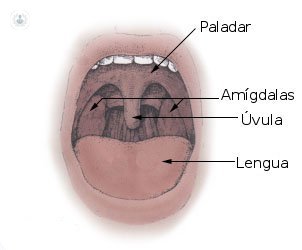When tonsils are removed?
Written by:The tonsils are a few clumps of lymphoid tissue that serve as first defense and the creation of antibodies in the entrance of air and food, especially in young children. Its maximum growth period occurs between 3 and 5 years.
Gouging tonsils can cause problems of recurrent infections or respiratory obstruction, especially nocturnal, known as Syndrome Obstructive Sleep Apnea (OSA).
Symptoms of tonsillitis
 In case of infections or recurrent tonsillitis appears fever, sore throat , difficulty swallowing, which respond poorly to antibiotics or repeat immediately after finishing treatment.
In case of infections or recurrent tonsillitis appears fever, sore throat , difficulty swallowing, which respond poorly to antibiotics or repeat immediately after finishing treatment.
In cases of OSAS, the child has nocturnal snoring with pauses during snoring and breathing stops, but not thoracic respiratory movements. This causes lack of oxygen in blood long term can lead to cardiovascular problems.
Treatment for tonsillitis
In the cases mentioned, the treatment of tonsillitis is and is removal of the tonsils, in the case of recurrent infections, and the removal or reduction, in the case of OSAS.
Because of bleeding (major risk of surgery) and the effect of saliva (which hinders healing), usually as Radio Frequency systems which seal the vessels and reduce this risk considerably used.
When tonsils are removed?
Normally tonsils are removed in recurrent tonsillitis unresponsive to medical treatment or large hypertrophy and OSAS with adults or older children. In young children with OSAS reduction it is very effective.
Worsening angina
Tonsil infections can cause complications such as peritonsillar abscesses in the infection out of what is purely the amygdala and extends to the neck tissues.
These infections can become serious if they affect the vessels of the neck or descend into the chest (mediastinum). For this reason and usually require surgical drainage amigdlectomía after passing the infection. Other complications of infections are rheumatic fever or some forms of psoriasis.
OSAS maintained by hypertrophy adenotonsillar overload can cause heart and lungs (cor pulmonale), which are subject to an extra effort to overcome the resistance caused by lack of oxygen. Usually the problem disappears after removal / reduction tonsils and adenoids.


